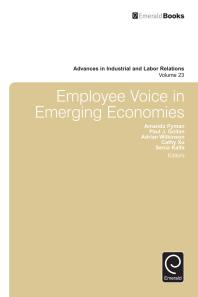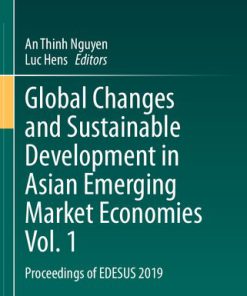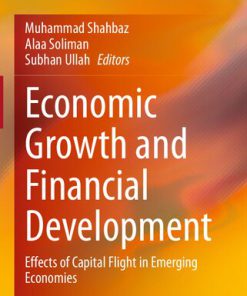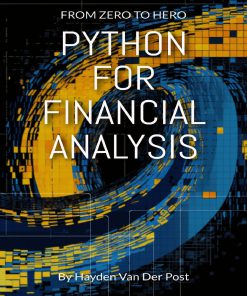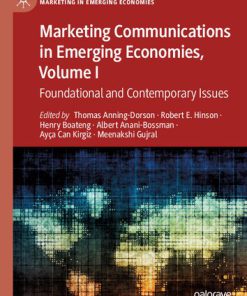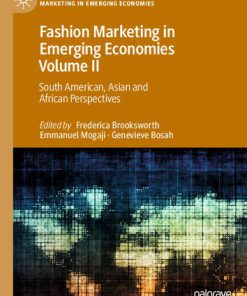Emerging Economies and the Global Financial System Post Keynesian Analysis 1st Edition by Bruno Bonizzi, Annina Kaltenbrunner, Raquel Ramos 036770059X 9780367700591
$50.00 Original price was: $50.00.$25.00Current price is: $25.00.
Emerging Economies and the Global Financial System Post Keynesian Analysis 1st Edition by Bruno Bonizzi, Annina Kaltenbrunner, Raquel Ramos – Ebook PDF Instant Download/Delivery: 036770059X, 9780367700591
Full download Emerging Economies and the Global Financial System Post Keynesian Analysis 1st Edition after payment
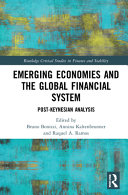
Product details:
ISBN 10: 036770059X
ISBN 13: 9780367700591
Author: Bruno Bonizzi, Annina Kaltenbrunner, Raquel A. Ramos
This book provides a comprehensive overview of the financial integration of emerging economies through an in-depth analysis of the international monetary system, how it impacts capital flows and exchange rates, and its implications for policy making. The financial integration of emerging economies has been a remarkable development of the past two decades. The growth of cross-border transactions and asset ownership, not least through the accumulation of foreign exchange reserves, has put many of these countries in a more prominent, if still peripheral, position within the global financial system. This has not been a smooth process, as integration has been marked by cyclical waves of capital flows, with financial and currency instability often accompanying the acute phases of these cycles. While conventional economic theory traditionally sees financial integration as a positive development, Post-Keynesian economists, working in the tradition of Keynes, Minsky and Kalecki, have long taken a more sceptical viewpoint. By centring the analysis of financial dynamics on concepts as liquidity, uncertainty, balance-sheet structures and institutions, Post-Keynesian theory highlights the intrinsic character of shocks imposed by financial integration upon emerging economies, and their implications for economic growth and distribution. This book demonstrates that these analyses can be fruitfully used to gain a better understanding of financial (in)stability and economic development in emerging economies as they integrate into the global financial system. This work provides key reading for students and scholars of economics, political economy and finance that are interested in the financial integration of emerging economies, and how the heterodox tradition of Post-Keynesian economics contributes to its analysis.
Emerging Economies and the Global Financial System Post Keynesian Analysis 1st Table of contents:
Part I Introduction and background
1 Introduction
The Post Keynesian contribution: A historical overview
Author contributions and plan of the book
Notes
References
2 Two post-Keynesian approaches to international finance: The compensation thesis and the cambist view
Introduction
The compensation thesis
The compensation thesis revisited
The cambist view and covered interest parity
The cambist view revisited
Conclusion
References
3 Trade versus capital flows: The key implicit and methodological differences between the Neoclassical and the Post Keynesian approaches to exchange rate determination
Neoclassical exchange rate theory(ies)
Post Keynesian exchange rate theory
Conclusions
Notes
References
Part II Minsky, balance sheets and cycles
4 A Minskyan framework for the analysis of financial flows to emerging economies
1 Introduction
2 Literature review
3 A Minskyan framework of international financial flows and exchange rate dynamics in EM
4 Applications of a Minskyan view of international financial flows and exchange rates: New forms of external vulnerability and the implications of pension funds investments in EEs
5 Conclusions
Notes
References
5 Post Keynesian and structuralist approaches to boom-bust cycles in emerging economies
Introduction
Business cycles in EMEs: Structural features and stylised facts
Post Keynesian and structuralist approaches to business cycles in EMEs
Models with fixed exchange rates
Real-side focus
Financial-side focus
Models with flexible exchange rates
Real-side focus
Financial-side focus
Discussion and conclusion
Notes
References
6 Cost competitiveness and asset prices as determinants of the current account in emerging economies
Introduction
The determinants of the current account in different theoretical frameworks
Trade-centred approaches
Neo-Kaleckian distribution and growth models
Balance-of-payments constrained growth models
Structuralist models
Finance-centred approaches
Minskyan literature
A synthesis of trade- and finance-centred approaches
Empirical evidence
Empirical evidence for trade-centred channels
Empirical evidence for finance-centred channels
Conclusion
Notes
References
7 Space in Post Keynesian monetary economics: An exploration of the literature
1 Introduction
2 Open-economy, aspatial Keynesian approaches
3 The building blocks of a ‘real space’ approach to Post Keynesian theory
4 Closed-economy spatial Keynesian approaches
5 Open-economy spatial Keynesian approaches
6 Conclusion
Notes
References
Part III Currency hierarchy
8 Evolving international monetary and financial architecture and the development challenge: A liquidity preference theoretical perspective
Introduction and overview
Keynes’ liquidity preference theory in a global setting
The global monetary order envisioned by Keynes
Evolution of the global U.S. dollar order: Finance tamed at first, then (hyper-)globalised
Global financial crisis and its aftermath: The end of an era?
(Hyper-)globalised finance and the developing world: Challenges and options
Notes
References
9 International money, privileges and underdevelopment
1 Introduction
2 Basics of the monetary Keynesian approach
3 A simple monetary Keynesian portfolio model
4 Factors which make a national currency an international one
5 Types of currency hierarchies
6 The future of the world currency system
Notes
References
10 The Post Keynesian view on exchange rates: Towards the consolidation of the different contributions in the ABM and SFC frameworks
Introduction
The PK exchange rate view
Central economies’ exchange rates
Peripheral economies’ exchange rates
Conclusions
References
11 A Post Keynesian framework for real exchange rate determination: An overview
1 Introduction
2 Conventional theories
3 The Post Keynesian framework for exchange rate determination
3.1 Keynes’ and Harvey’s theory and the currency hierarchy model
3.2 Asset choice under uncertainty and the exchange rate
3.3 EME currencies and the hierarchical monetary system
3.4 Empirical findings
4 Real exchange rate, economic growth and exchange rate policy
5 Concluding remarks
Notes
References
Part IV Current account and growth
12 The Kaleckian theory of exchange rates
Introduction
Profits and the exchange rate
Trade-determined exchange rates, economic development and corporate structure
Money capital flows and Fisher effects
Destabilising the world economy
Conclusion
Acknowledgements
Note
References
13 Financial liberalisation, exchange rate dynamics and the financial Dutch disease in developing and emerging economies
1 Introduction
2 Portfolio inflows in a two-sector economy with a ‘speculative’ sector
3 Portfolio booms, exchange rate appreciation and medium-term financial cycles in developing and emerging countries
3 Long-run damages of temporary financial booms in developing countries
5 Some concluding policy implications
Notes
References
14 Global financial flows in Kaleckian models of growth and distribution: A survey
1 Introduction
2 The (net) capital account makes its entry
3 External debt sustainability and devaluations
4 External flows and financial instability
5 Gross financial flows, income distribution and growth
Notes
References
Part V Policy implications
15 Implications of modern money theory on development finance
Introduction
A critical examination of the mainstream approach of development finance
Modern money theory and development finance
Modern money theory
Development banks and development financing
Fiscal spending and employer-of-the-last-resort
Conclusion
Notes
References
16 Monetary sovereignty in the Post Keynesian perspective: In the search of a concept
1 Introduction
2 Monetary sovereignty: A multidisciplinary and controversial subject
3 The MMT concept of monetary sovereignty
3 A Post Keynesian concept of monetary sovereignty
5 Final remarks
Notes
References
17 Dealing with global financial asymmetry: Contributions of regional monetary cooperation between emerging markets and developing countries
1 Introduction: Global financial asymmetries and restricted policy space for emerging markets and developing countries
2 Traditional optimal currency area theory falls short on regional monetary cooperation in EMDC
3 Regional monetary cooperation as a policy tool for reducing economic volatility
3.1 Different forms of regional monetary cooperation
3.2 Reducing transaction costs of intra-regional trade: Regional payment systems
3.3 Enhancing regional shock buffering capacities: Regional financial arrangements
4 Conclusions
Notes
References
18 De-regulation of finance in China and India: A post-Keynesian analysis
The background
China: From market-led reforms during the Deng Xiao Ping regime to the ‘China model’ and ‘new normal’ growth under Xi Jinping
Market-led reforms initiated by Deng Xiao Ping
Changes in leadership since 1992 and deviations from earlier market reforms
Changes in exchange rate management
The volatile stock market
Decelerating growth and financial instability
India: On track of a de-regulated economy since the mid-Eighties
Deregulated finance is no panacea for growth via efficient markets
People also search for Emerging Economies and the Global Financial System Post Keynesian Analysis 1st:
increasingly emerging economies are
q3 economy
vs emerging markets r6
u.s. global investors emerging europe fund
Tags:
Bruno Bonizzi,Annina Kaltenbrunner,Raquel Ramos,Emerging
You may also like…
Politics & Philosophy - Social Sciences
Business & Economics
Business & Economics - Economics
Can BRICS De dollarize the Global Financial System Zongyuan Zoe Liu & Mihaela Papa
Business & Economics - Econometrics
Computers - Computer Science
Python For Financial Analysis From Zero to Hero 1st Edition Van Der Post
Business & Economics - Econometrics
Post Keynesian Economics New Foundations 2nd Edition by Marc Lavoie ISBN 9781839109614 1839109610
Business & Economics



